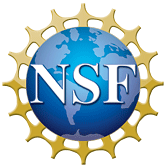Evaluations of tropospheric aerosol properties simulated by the community earth system model with a sectional aerosol microphysics scheme
To Access Resource:
Questions? Email Resource Support Contact:
-
opensky@ucar.edu
UCAR/NCAR - Library
| Resource Type | publication |
|---|---|
| Temporal Range Begin | N/A |
| Temporal Range End | N/A |
| Temporal Resolution | N/A |
| Bounding Box North Lat | N/A |
| Bounding Box South Lat | N/A |
| Bounding Box West Long | N/A |
| Bounding Box East Long | N/A |
| Spatial Representation | N/A |
| Spatial Resolution | N/A |
| Related Links | N/A |
| Additional Information | N/A |
| Resource Format |
PDF |
| Standardized Resource Format |
PDF |
| Asset Size | N/A |
| Legal Constraints |
Copyright 2015 American Geophysical Union. |
| Access Constraints |
None |
| Software Implementation Language | N/A |
| Resource Support Name | N/A |
|---|---|
| Resource Support Email | opensky@ucar.edu |
| Resource Support Organization | UCAR/NCAR - Library |
| Distributor | N/A |
| Metadata Contact Name | N/A |
| Metadata Contact Email | opensky@ucar.edu |
| Metadata Contact Organization | UCAR/NCAR - Library |
| Author |
Yu, P. Toon, O. Bardeen, Charles Mills, Michael J. |
|---|---|
| Publisher |
UCAR/NCAR - Library |
| Publication Date | 2015-06-01T00:00:00 |
| Digital Object Identifier (DOI) | Not Assigned |
| Alternate Identifier | N/A |
| Resource Version | N/A |
| Topic Category |
geoscientificInformation |
| Progress | N/A |
| Metadata Date | 2025-07-11T22:41:04.062008 |
| Metadata Record Identifier | edu.ucar.opensky::articles:16956 |
| Metadata Language | eng; USA |
| Suggested Citation | Yu, P., Toon, O., Bardeen, Charles, Mills, Michael J., Fan, T., English, J., Neely, Ryan. (2015). Evaluations of tropospheric aerosol properties simulated by the community earth system model with a sectional aerosol microphysics scheme. UCAR/NCAR - Library. https://n2t.org/ark:/85065/d7t43v9g. Accessed 03 December 2025. |
Harvest Source
- ISO-19139 ISO-19139 Metadata

